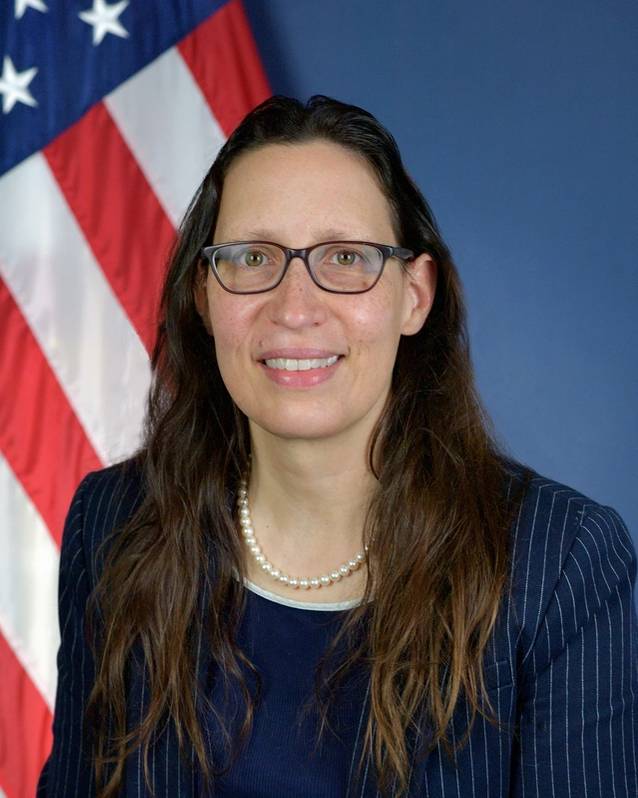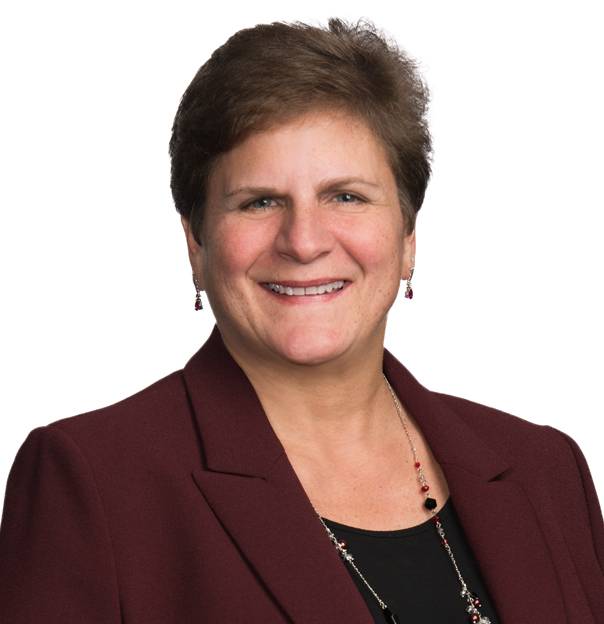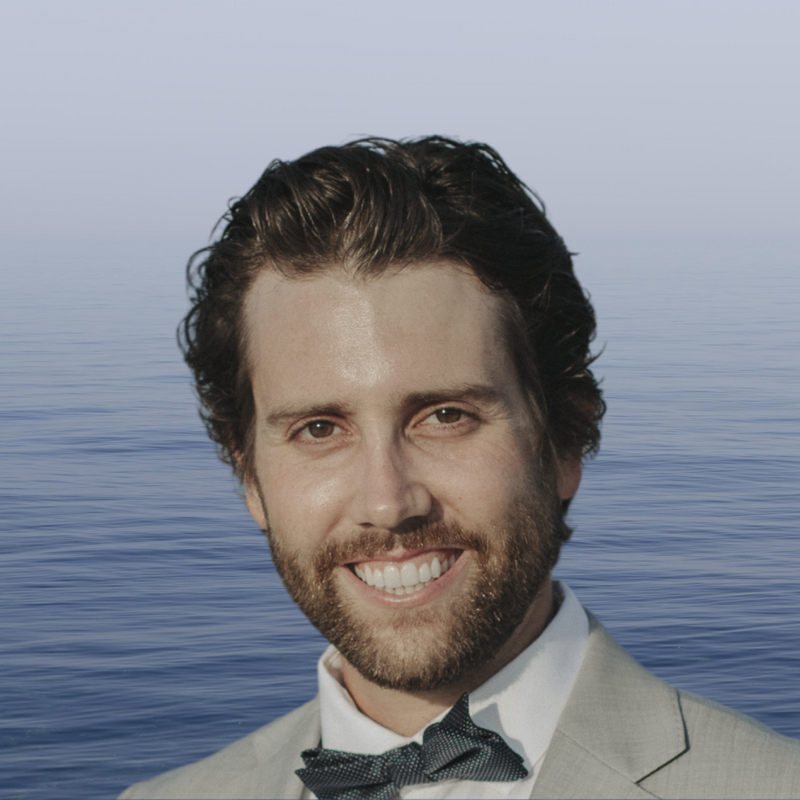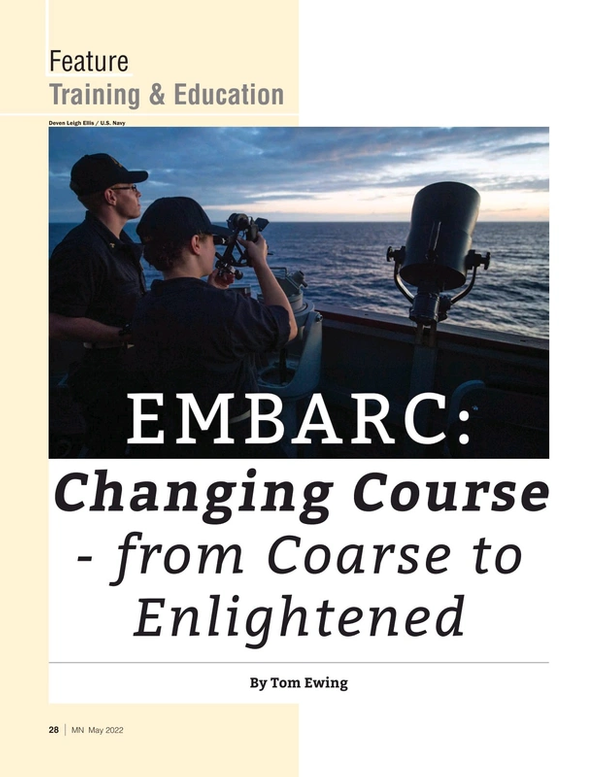
EMBARC: Changing Course - from Coarse to Enlightened
“Until every employee, and every midshipman, and cadet, and every trainee trusts the system and until all allegations are handled properly, abuse will continue to occur, it will continue to go unreported, and people will continue to suffer alone—and that is simply intolerable,” said Lucinda Lessley, Acting Maritime Administrator, presenting at the Connecticut Maritime Association Shipping Expo and Conference, in February.
On March 30, the Maritime Administration (MARAD) released a guidance document—EMBARC— to establish a structure and process to protect maritime cadets from sexual assault and sexual harassment (SASH). Its primary focus is on U.S. Merchant Marine Academy (MMA) cadets during their Sea Year training on commercial vessels. However, it has an expanded focus: to establish a safe, respectful and non-hostile working environment for all mariners throughout the maritime industry.
In her keynote address to the CMA Expo, Lessley said that it is her hope that EMBARC practices are “implemented in vessels’ Safety Management System (SMS): to address this as a safety measure for every mariner aboard a vessel.” SMS documents are part of the Coast Guard’s regulatory and enforcement system. The inclusion of SASH policies could extend legal protection beyond just cadets.
EMBARC, which stands for “Every Mariner Builds a Respectful Culture”, will require vessel operators who host Sea Year cadets to agree to demands for safety and accountability (for more summary details, see text box “EMBARC Primer”).
Importantly, the publication in March started a public comment period (ending May 31) on the guidance. EMBARC is not entirely new. It was first posted to MARAD’s website last December; however, it has been under development, in various form, since at least 2017.
MARAD wants comments on the specific directives within EMBARC, whether core issues are properly addressed, and suggestions to further improve compliance and workplace safety.
But MARAD’s interest goes further. It seeks comments on whether EMBARC or similar efforts should apply to vessel owners “other than commercial carriers that must comply with SOLAS” (Safety of Life at Sea). Those “other carriers” include “state and local governments, state maritime academies and Great Lakes commercial vessel operators”. The reference to the state academies is worth a close look. The Federal Register text proposes that EMBARC would apply to the academies both as operators of training vessels and “as institutions of higher education that place their cadets on commercial vessels would be required to meet Coast Guard licensing requirements.”
EMBARC development is open and evolving. MARAD’s website already has EMBARC updates. One important upcoming move is establishing a Federal Advisory Committee on SASH issues; MARAD is seeking committee membership now.
As many readers know, MARAD paused Sea Year training aboard commercial vessels last October. This decision, and the events that led up to it, were a priority topic – a “call to action” – within Lessley’s keynote at the CMA Expo:
“We (paused Sea Year training) so we could strengthen both the measures we require of the vessel operators carrying cadets and also our own institutional policies, procedures, and training instructions to improve safety and support a culture of respect.
“As Secretary Buttigieg has said, sexual assault and harassment have been open secrets in the maritime industry. And to combat them, it’s not enough to say the right things…to say we have zero tolerance. It’s not enough to say we take all allegations seriously.
“We must name the problems we seek to eliminate and then fully implement policies and procedures to prevent harassment and assault from happening. We must also remove the barriers that have too often stood in the way of reporting when harassment and assaults have occurred.”
 “We must name the problems we seek to eliminate and then fully implement policies and procedures to prevent harassment and assault from happening. We must also remove the barriers that have too often stood in the way of reporting when harassment and assaults have occurred.” - Lucinda Lessley, Acting Maritime Administrator (Photo: MARAD)
“We must name the problems we seek to eliminate and then fully implement policies and procedures to prevent harassment and assault from happening. We must also remove the barriers that have too often stood in the way of reporting when harassment and assaults have occurred.” - Lucinda Lessley, Acting Maritime Administrator (Photo: MARAD)
Concurrent to DOT/MARAD’s decision to postpone Sea Year, Congress demanded action and accountability in response to SASH maritime incidents. EMBARC grew from this intense leadership scrutiny. As noted, it was made available in December. That’s also when MARAD announced it would lift the Sea Year pause, that “embarkations on commercial vessels will resume as operators enroll in the EMBARC program and affirm their compliance with the program's new safety requirements.” At the time of her speech Lessley said that five companies had enrolled in EMBARC.
In an April interview Lessley was asked about the level of participation by commercial vessel operators and whether that might impact sufficient training slots for cadets. Training time has a “split” reference because Sea Year typically consists of two sailing sessions, one during sophomore year and then a longer junior year session. Lessley explained that about 120 junior students were most impacted by the pause because it timed with their second year. However, Lessley said, “We anticipate that all members of the Class of ’23 will be able to accrue the time they need at the expected time period to take their license exams when they would normally take them.”
A big reason, Lessley explained, is the Navy, the Coast Guard and the Military Sealift Command (MSC) stepped up and increased their training opportunities. Lessley was effusive in her appreciation for this assistance.
She explained further that MSC normally provides about 25% of training slots. However, “training at the Merchant Marine Academy has relied largely on commercial vessels,” she commented, and added: “We recognize the value of that training and that is why we moved so quickly to create the EMBARC program, so that we could enroll commercial vessels and have those training opportunities available to our midshipmen.”
She was asked whether MARAD had a timeline, informal or otherwise, by which officials hoped to have certain numbers of U.S. vessel operators signed on to EMBARC. Her reply: “We would like all U.S. flag carriers that have vessels under SOLAS to enroll. That is our goal.”
In her keynote in February, Lessley urged international operators to consider an EMBARC type program. She referenced that the “IMO has noted sexual assault and sexual harassment are international challenges and they are examining appropriate actions.” She was asked in April about any discussions or interactions so far with foreign vessels. She said not yet, but she emphasized, again, that this starts a call to action, that it is a concern for the IMO and she is looking for “all operators to be deliberate in addressing this issue”.
In her interview, Lessley described anti-SASH efforts beyond EMBARC, which she called more public facing than a second critical move: a new “Superintendent Instruction,” issued December 22, to govern USMMA’s Sea Year and a revised Sea Year guide for midshipmen. These documents present new policies and procedures to strengthen support for cadets, including the use of new satellite phones cadets are given while they are at sea as well as a new amnesty policy for midshipmen who experience or witness sexual assault or harassment.
The Superintendent Instruction is a 120-page document. It starts with a memo-type directive signed by Jack Buono, Vice Admiral and outgoing USMMA Superintendent. Anti-SASH efforts are the central focus, and the Instruction implements eight specific procedures in support of Sea Year safety. One of these allows cadets to use a “designated code word,” or SOS button, to return from Sea Year assignment.
The Instruction is straightforward in establishing anti-SASH responsibilities for program management, evaluation and, as deemed necessary, recommended revisions. It names the Academic Dean and Provost as responsible for supervising faculty and staff activities. It directs the Commandant of Midshipmen to ensure that all students “fully understand and comply with all procedures set forth in this Instruction.”
Lessley was asked how the EMBARC Guidance fits within MARAD and DOT’s larger regulatory framework. She noted that MARAD is not a regulator, that the Guidance is a program that MARAD is required to have by statute. She added, however, that MARAD is working closely with the Coast Guard, “the regulator.” One goal is to establish EMBARC as an enforceable section within a company’s safety management system.
In closing, Lessley repeated that “the most important thing here is the culture change. We see EMBARC as a first step in supporting that culture change, to improve safety for all mariners.”
For additional insight, Marine News reached out to a number of maritime experts. Jeanne Grasso is a maritime attorney, with Blank Rome LLP, based in Washington, D.C., specializing in maritime issues. Grasso noted that while the EMBARC Guidance focuses on vessels employing USMMA cadets, its presence on the policy stage should not be disregarded.
“EMBARC is an important start,” she said, adding that “these standards should help foster a safer and more inclusive shipboard work environment. Even more critical, however, is the company’s culture and accountability on the part of leadership, both shipboard and shoreside.”
Grasso commented that SASH aboard vessels, U.S. flag and foreign flag, unfortunately has a long history and is not confined to a few bad actors. The standards set forth in EMBARC need to draw vessel operators’ attention.
“The industry cannot lose focus,” Grasso emphasized. “This is not just a cadet issue, and it is not just a female issue, it is widespread and must be dealt with in an expansive and comprehensive manner.”
 “The industry cannot lose focus. This is not just a cadet issue, and it is not just a female issue, it is widespread and must be dealt with in an expansive and comprehensive manner.” - Jeanne Grasso, maritime attorney, Blank Rome LLP
“The industry cannot lose focus. This is not just a cadet issue, and it is not just a female issue, it is widespread and must be dealt with in an expansive and comprehensive manner.” - Jeanne Grasso, maritime attorney, Blank Rome LLP
WISTA (Women's International Shipping & Trading Association) is an international networking organization, in 54 countries, established “to attract and support women, at the management level, in the maritime, trading and logistics sectors.” Christina Liviakis Gianopulos, Director, Business Development at American Ship Repair in New York, is incoming President and Director of WISTA USA.
Gianopulos called EMBARC a milestone document. “We believe these standards could help foster a safer work environment for all seafarers,” she said, adding that “EMBARC represents a step in the continued discussion of how we as an industry create safe, inclusive work environments that welcome and embrace the next generation of seafarers.”
Gianopulos said there are still many unanswered questions about implementing EMBARC. One concern is whether compliance will actually lead to meaningful change. “Creating additional check boxes,” Gianopulos commented, “for the sake of saying an owner/operator is ‘EMBARC compliant’ will not necessarily ensure a safe workplace.” She expects the maritime industry, MARAD, and the maritime academies will need to keep working together as implementation proceeds. “All of these groups,” she advised, “need to listen to each other, to find best practices, and be willing to address concerns collaboratively with transparency in a timely fashion.”
Anti-SASH - Looking at the Ship Itself
While most Marine News readers are likely familiar with cargo vessels—decks, holds, engine room, crew quarters, officers' quarters, galleys, labyrinthine passageways—some may not be so familiar.
An awareness of a vessel's vast space, its three dimensions, is critical for placing SASH concerns within a physical setting, a workplace setting. After all, despite its size, a cargo vessel carries just 20-30 people. Isolation, even entrapment (one hates to write it) are not hard to envision.
Bryan Boyle is a professional mariner, U.S. Merchant Marine Academy class of 2012; Sea Year 2009-2010. Boyle has a "Life at Sea" video blog on YouTube (35,300 subscribers and counting). His "Touring a Modern Day Cargo Ship," (2.7 million+ views) set aboard the 958-foot Maersk Ohio, offers the real-world look necessary for thinking about anti-SASH policies.
EMBARC, for example, directs video recording in hallways near cadet staterooms, likely a good place. But note there are miles (seemingly) of tunnel-like passageways aboard the Maersk Ohio. A ship is a 24-hour workplace, and an isolated one. Is an everyday passageway akin to being in a dark alley on the rough edges of town? Should all passageways have recording?
Boyle's video takes us to separate facilities for officers and crew. Is separation helpful? For whom? Maybe in mixed settings a captain and leadership would be more aware of jokes, innuendos, bullying and emerging transgressions, and know when it's time to act. Or vice versa: does leadership take advantage of exclusive areas?
In an email Boyle wrote that on-boarding these days includes presentations about a company's SASH policies and procedures, messages repeated throughout a voyage. He said that “most ships have become much more thorough in the training and enforcement of these policies."
 “Most ships have become much more thorough in the training and enforcement of [SASH] policies." - Bryan Boyle, professional mariner, USMMA class of 2012.
“Most ships have become much more thorough in the training and enforcement of [SASH] policies." - Bryan Boyle, professional mariner, USMMA class of 2012.
Boyle has worked with many female mariners: captains, mates, engineers, stewards and cooks. He became involved in a harassment case during a voyage after a female crew member reported an incident to him. This prompted an onboard investigation, and an offending crew member was fired.
Looking back to Sea Year, Boyle commented that SASH incidents often go unreported because victims want to be well liked and not to be known as someone involved in charges against other crew members. "Mariners need to better support each other," Boyle said, "and let it be known that they stand with their fellow crew as brothers and sisters who look out for each other in keeping ships a safe working environment.”
Boyle notes a decline in ship-board camaraderie. Crews used to spend off-hours playing games and watching movies. Now, he said, most retreat to staterooms to look at personal devices.
EMBARC: A Primer – some highlights
(“Every Mariner Builds A Respectful Culture”)
SASH – “Sexual assault and sexual harassment”
Core focus: Vessels approved to carry cadets from the US Merchant Marine Academy for training purposes. Larger focus: using SASH to leverage development of a safe and respectful workplace across the maritime industry.
Core Tenets:
• Build and maintain a shipboard culture of inclusion and respect.
• SASH: zero tolerance and zero tolerance for retaliation.
• Eliminate reporting barriers.
• Support survivors, witnesses and bystanders who report incidents.
• Prompt response to reports.
• Ensure EMBARC and company and vessel policies are aligned.
• Implement SASH best practices (available from SOCP).
• Incorporate SASH into Company and Vessel Safety Management Systems.
Actions by DOT, MARAD and USMMA :
• Develop a Superintendent Instruction on Sea Year policy.
• Update the Sea Year Guide, focus on supporting cadets; ensure the Guide contains all revised SASH policies and procedures.
• Strengthen and expand the SAPR office – “Sexual Assault Prevention and Response”.
• Continue to coordinate with the Coast Guard, “which is the regulator of the maritime industry,” to champion these changes including “efforts to strengthen regulatory requirements.”
Action Steps – Vessel Operators:
• Immediate: Affirm SMS/EMBARC compliance. Designate a SASH contact and arrange meetings. Training for officers and crew. Incident reporting. Provide functional door locks and a list of all master-key holders.
• Intermediate, within one year: Training and survivor advocacy. Develop a “SASH perpetrator information exchange.”
• Long Term: Vessel monitoring, e.g., video monitoring in passageways. Develop a related mariner credential.
Definitions: EMBARC provides an extensive and detailed list of definitions.
Read EMBARC: Changing Course - from Coarse to Enlightened in Pdf, Flash or Html5 edition of May 2022 Marine News
Other stories from May 2022 issue
Content
- Interview: Richard Balzano, Dredging Contractors of America page: 12
- Suggestions for Making America’s Marine Highway Program More Effective page: 18
- US Inland Waterways: Big Money, New Projects, Help Wanted page: 22
- EMBARC: Changing Course - from Coarse to Enlightened page: 28
- Callan Marine Powers Ahead page: 34


